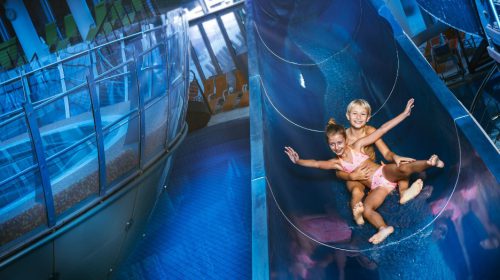Munchen (Home of the Monks) or Munich offers a plethora of exciting diverse sights guaranteed to please and suit any taste and preference. It doesn’t matter if you love to relax in a pavement café, stroll in vast parks, or you would rather take in the views of the amazing architecture of venerable palaces and churches, Munich got something in store for everyone.
A Quick History of Munich
Munich traces back its origins to Tegernsee’s Benedictine monastery that was presumably established in 750 ce. The Duke of Bavaria, Henry the Lionn, granted the right to the monks in 1157 for establishing a market where Isar River met the road from Salzburg. The next year, a bridge was erected across the Isar and this fortified the marketplace.
The Wittelsbach family made their home in Munich in 1255 after succeeding in 1180 to the duchy of Bavaria. The Wittlesbachs had a close connection to the destiny of the town for over 700 years. During the early 14th century, Louis IV or Louis the Bavarian, the very first of Wittelsbach line of the Holy Roman emperors, grew the town to the size and this remained at this size until 18th century came to an end.
Under the effective and powerful ruler, Maximilian, a Bavarian elector, the size and wealth of Munich also increased and flourished until Thirty Years’ War. The Swedes occupied it in 1632 under the rule of Gustav II or Gustavus Adolphus. A plague epidemic spread in 1634, causing the death of approximately one-third of the population.
Louis I, Bavaria’s king from 1825 up to 1848 was the third Wittelsbach who made his own mark on the community. Louis was the one responsible for the planning and creation modern Munich. His architects developed the characteristic appearance of the city in their designs of the public buildings.
The 19th century was the greatest period of development and growth for Munich. The Protestants became citizens for the very first time in a town that was purely Roman Catholic back then. In 1854, the population of the city was at 100,000 and by 1900, this grew to 500,000. Louis II further enhanced the cultural importance of Munich in Europe when he championed the composer Richard Wagner, reviving its popularity as a city of the stage and music.
Wittelsbach dynasty’s rule finally came to an end with Louis III and his self-imposed exile in November 191. Following World War I, the city became a hotspot of the right-wing political uproar. Munich was also the very place where Adolf Hitler became a part of the Nazi Party and named as its leader. If you visit Munchen, you can still see the beer cellar in which meetings are held leading to the rising or Beer Hall Putsch against the authorities of Bavaria in November 1923. Munich suffered greatly in World War II from the Allied bombing raids, destroying over 40% of the buildings in the area.
Top Attractions in Munchen
Here are some of the best attractions that you shouldn’t miss checking out when you find yourself wandering the streets of Munich.
Deutsche Museum
Aside from being one of the world’s first ever scientific technological museums, Deutsche Museum is also the biggest of them all with a total area of 50,000 square meters. This is where you can learn and discover more about technological methods, instruments, and law of nature in an entertaining and enthralling way.
English Garden
The English Garden is the largest urban public park in Munich and provides a range of attractions. This is where you can enjoy a scenic view from Monopteros. You can also drop by at the popular beer garden at “Chinesischer Turm”. Europe’s first ever public park is the key creation of Friedrich Ludwig von Sckells, a garden design. Today, the English Garden is among the biggest city parks in the whole world.
Frauenkirche or Cathedral Church of Our Lady
The Metropolitan Church of the Archbishopric of Munich-Freising boasts of 15th century late Gothic nave. Its interior houses works of art that span 5 centuries, making it Munich’s official landmark.
Hofbräuhaus
The most popular beer hall of the world is quite in demand among locals and tourists alike. This is where you can grab a bite of the tastiest Bavarian dishes, enjoy traditional music, and a “Maß” of beer, of course!
Marienplatz with New Town Hall
Established in Flanders Gothic Style from 1867 to 1909, Marienplatz’s façade has a length of more than 300 feet and features remarkably elaborate ornamentation made from stones. Its tower of 260 feet with carillon is, together with the St. Peter’s Church and the Cathedral’s twin towers, is among the most distinctive features of the skyline of the city.
Olympiapark and BMW Welt
The landscaped Olympiapark is the site of 1972 Olympics and houses sport facilities, bicycle paths, lakes, a football stadium, restaurants, and concert venues and the landmark tent-style roofs. Never miss out to visit the astonishing BMW Welt right across the street beside the headquarters of the company. This museum was built in a four-cylinder engine’s shape. It serves as an amazing gateway to the brand and a one of a kind meeting place for people coming from various parts of the world.
Pinakotheken
Pinakothek der Moderne next to Neue Pinakothek and Alte Pinakothek is an impressive and austere box whose glass and concrete exterior will never make you guess what is waiting for you inside. This is the home of the fine collection of Entartete Kunst or degenerate art and German Expressionism. These are the paintings that the Nazis confiscated and condemned. You can also browse through the exhibitions of architecture, graphic art, and design. It is the best place to be if you want to examine everyday objects in a new light, including cars, trainers, prehistoric PCs, furniture, and Handys, the German’s word when referring to mobile phones.
There are still many other wonders waiting for you in Munchen so be sure to drop by at all the attractions as you can.










